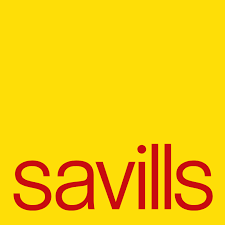 The prospect of house price falls and wider market uncertainty is having the biggest impact on buyer sentiment across London’s prime property market, overtaking increasing interest rates, according to the latest research from Savills.
The prospect of house price falls and wider market uncertainty is having the biggest impact on buyer sentiment across London’s prime property market, overtaking increasing interest rates, according to the latest research from Savills.
The estate agency’s Q3 prime market index reveals that property prices in prime central London fell by a marginal 0.5% on the quarter and 1.2% on the year, while more ‘needs-based’ outer prime London locations fell by a slightly greater 0.9% during Q3 and by 2.5% on the year.
“Prime markets have remained comparatively robust this year but our latest data indicates that prime London is not immune to months of rising rates and a wider economic and political uncertainty, which is still likely to put downward pressure on prices. Although the levelling off of interest rates and expectations of falls next year should go some way to inspire some confidence and support transactions,” said Frances McDonald, director, Savills residential research.
While there has been growing acceptance from sellers that prices have fallen from pandemic highs, buyer expectations on price are still markedly lower than sellers, with the majority of agents (53%) reporting that buyers are expecting to pay -5 to-10% less for a home, while they believe half of sellers (50%) only expect to get 0to-5% less for their home.
McDonald continued: “For all but the very best properties, buyers and sellers are as much as 5% apart on price. Closing this gap will be crucial in maintaining activity levels for the remainder of the year, with those most prepared to be realistic on price likely to garner the best end result.”
Over the past three months there has also been a continued divergence in performance between different prime London property types – with houses holding up significantly better than apartments across every region.
Houses in North and East London (primarily Victoria Park, Islington and Hackney) were the only areas of prime London to buck the trend with positive growth (+0.7%) in the year to Q3, due to constrained stock and increased demand. But prices for apartments, which are typically more exposed to higher interest rates, have fallen across every prime London location.
“Sustained demand and short supply has underpinned growth for smaller properties in first-time buyer micro markets, such as Clapham and Wandsworth. Here, the Bank of Mum and Dad has a significant presence, meaning many first-time buyers frustrated by high rents are less reliant on more expensive, high loan to value borrowing.
“But locations where supply exceeds demand, including Canary Wharf and Wapping, present strong opportunities for young professionals working nearby and opportunistic cash investors, many of whom are buying from divesting landlords,” continues Frances McDonald.
The top-end of the Prime Central London market (£5-10 million), where cash plays the biggest role, is continuing to outperform the lower end of the PCL market (£2 million and below), with prices in the latter falling by -1.7% on the year, vs -0.6%.
“Mortgage borrowing is largely discretionary in the prime central London markets, and so we saw an uptick in borrowing when interest rates were at historic lows during the pandemic. Now these markets are benefiting from affluent buyers’ ability to transact with cash or low loan to value ratios as rates have risen.
“But not all prime markets are underpinned to the same extent by reserves of cash and equity,” added McDonald. “Prime family house markets of South West and West London, in particular, are typically more highly leveraged and deals here are becoming increasingly price sensitive.”


Comments are closed.